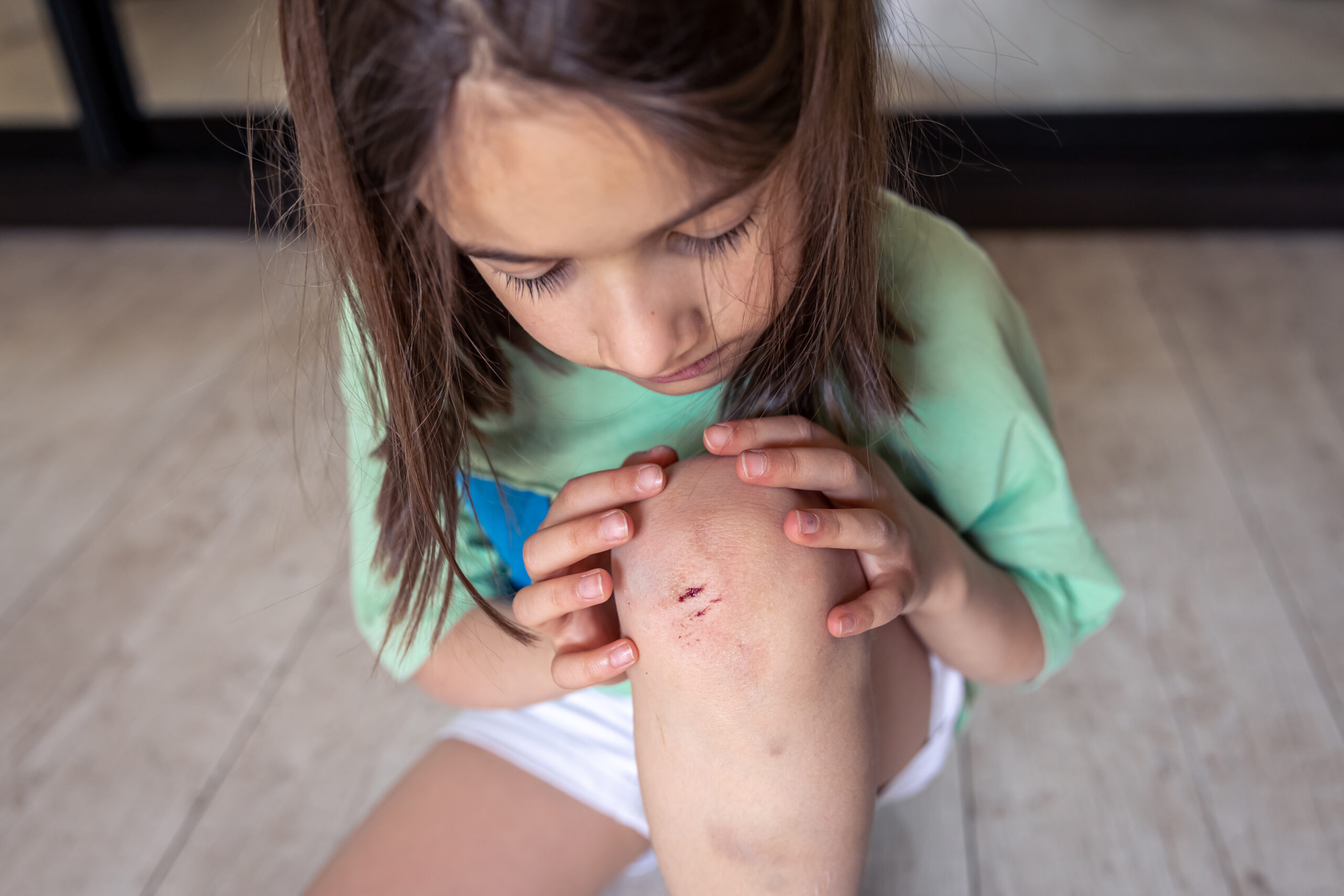How to Stop Kids with Autism from Picking at Scratches or Wounds is a common concern for many caregivers. This behavior can delay healing, increase the risk of infection, and lead to frustration. Understanding why children engage in picking and implementing effective strategies can help manage and reduce this habit, ensuring better healing and overall well-being.
Why Do Children with Autism Pick at Scratches or Wounds?
There are several reasons why a child with autism might engage in this behavior:
1. Sensory Stimulation
Some children find picking at scabs or wounds pleasurable. The tactile sensation of peeling skin or touching the wound can be satisfying. The visual changes in the wound may also be stimulating.
2. Temporary Relief
Scratches and wounds can be itchy, painful, or uncomfortable. Picking at them may temporarily alleviate the sensation, making it a self-soothing behavior.
3. Habit Formation
If a child repeatedly engages in picking, it may become a habit, especially if the behavior has been unintentionally reinforced. For example, if picking leads to attention—whether positive or negative—the child may continue doing it.
4. Anxiety or Stress
Many children with autism use repetitive behaviors, such as picking, as a way to cope with stress or overwhelming emotions. Picking may serve as a calming mechanism in these situations.
5. Lack of Understanding
Some children do not realize the consequences of picking at wounds. They may not be aware that it slows healing, increases the risk of infection, or causes additional pain.
Effective Strategies to Stop Picking
To manage and reduce this behavior, caregivers can implement the following strategies:
1. Reduce the Opportunity to Pick
One of the simplest ways to discourage picking is by covering the affected area.
- Use bandages or clothing to make wounds less accessible.
- Long-sleeved shirts, gloves, or soft compression garments can help if the child picks at multiple areas.
- Consider skin-safe adhesive bandages in fun designs to make wearing them more appealing.
2. Provide Alternative Sensory Activities
If picking is driven by sensory needs, offering substitutes can help redirect the behavior.
- Provide fidget toys, stress balls, or textured fabrics to satisfy the need for tactile input.
- Use soothing alternatives like cold packs, lotions, or anti-itch creams to relieve discomfort without picking.
3. Use Visual Supports
Visual aids can reinforce positive behavior and help the child understand why they should avoid picking.
- Create a simple visual chart with steps such as “Leave the wound alone,” “Apply lotion,” and “Tell an adult if it hurts.”
- Social stories can explain what happens when wounds heal and why picking should be avoided.
- Use visuals showing a wound healing with a happy face for leaving it alone and a sad face for picking.
4. Encourage and Reward Positive Behavior
Positive reinforcement can help the child build better habits.
- Keep the child’s hands occupied with engaging activities.
- Set a timer (e.g., 5 minutes) and reward them if they refrain from picking during that period.
- Rewards can include stickers, favorite snacks, or extra playtime.
- Gradually increase the no-picking duration as they succeed.
5. Increase Awareness of the Behavior
Some children may not realize when they are picking. Helping them recognize the behavior can assist in stopping it.
- Gently say, “Hands down,” and redirect them to an alternative activity when they start picking.
- Encourage self-awareness by asking them to notice when their hands move toward a wound.
6. Manage Anxiety and Stress
Since picking may be a response to anxiety, creating a calming routine can be beneficial.
- Engage the child in sensory play, listening to music, or deep breathing exercises.
- Use a visual schedule or a “First-Then” board to create predictable routines and reduce stress.
7. Redirect Attention to Engaging Activities
Keeping the child’s hands occupied with fun and engaging activities can naturally reduce picking.
- Offer activities such as coloring, building with blocks, or playing with sensory materials.
- If picking occurs while watching TV, provide a fidget toy or encourage them to build with blocks during the show.
How to Stop Kids with Autism from Picking at Scratches or Wounds – Final Thoughts
Helping a child with autism stop picking at scratches or wounds requires patience, consistency, and a tailored approach. By understanding the underlying reasons and using strategies like sensory substitutions, positive reinforcement, and anxiety management, caregivers can effectively reduce this behavior and promote healing. Every child is different, so experimenting with these methods can help determine what works best for each individual.
Also read: How Does Yoga Help Children with Autism?
About Olga Sirbu
My name is Olga Sirbu, I am a Board Certified Behavior Analyst (BCBA) and Licensed Applied Behavioral Analyst. My goal is to support and empower families and individuals on the autism spectrum.
Autism Advance is dedicated to training parents and caregivers, providing practical tips, and teaching individuals how to educate kids with autism.
I share evidence-based practices to help you better understand and support individuals with autism. Learn practical strategies to help individuals with autism reach their full potential, as well as gain a deeper understanding and acceptance of autism.
Thank you for considering Autism Advance as a resource for your autism journey.







